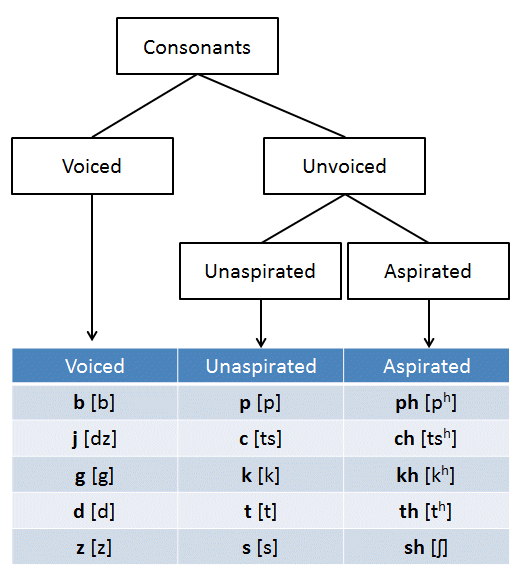The existence of voiced and unvoiced initial consonants in Penang Hokkien is what makes the language different from Mandarin. Voiced initial consonants are something which people from a Mandarin background have problem understand. Let me try to explain what are voiced initial consonant.
In linguistics, "voiced" means a sound pronounced with a vibration coming from the throat area. Try saying "gong". Now compare it with "kong". You will see that the "g" has a grrrrr vibration when you pronounce it, whereas then "k" is sharp and has no such vibration.
The same is true when you pronounce "bong". Compare it with "pong". The "b" has a brrr vibration in the throat area, whereas the "p" comes across sharp. Do you feel it?
Voiced and unvoiced consonants come in pairs. The consonant g is paired with k, b with p, d with t, z with s and j with c, to name some. In Penang Hokkien, the ones you will come across quite often are the g/k, b/p and j/c.
Mandarin is different from Hokkien because it (Mandarin) has no corresponding voiced consonants for the consonants k and p. Mandarin has only two sets of initial consonants (the unvoiced unaspirated and unvoiced aspirated) whereas Hokkien has three sets (the voiced, the unvoiced unaspirated and the unvoiced aspirated).
Pinyin was developed to cater to the needs of Mandarin. As Mandarin doesn't have voiced initial consonants, pinyin uses the consonants g and b to represent the unaspirated k and p sounds. Having used these to represent the unvoiced unaspirated initial consonants, it doesn't have the letters to represent the voiced initial consonants of Hokkien, which makes it not the right choice for spelling Hokkien words.
The following chart shows the voiced and unvoiced consonants of Penang Hokkien.

Language Learning Tools
Use the following language learning tools to learn Penang Hokkien!Learn Penang Hokkien with uTalk
This app opens the door to over 150 languages.Return to Penang Hokkien Resources

Copyright © 2003-2025 Timothy Tye. All Rights Reserved.

 Go Back
Go Back
